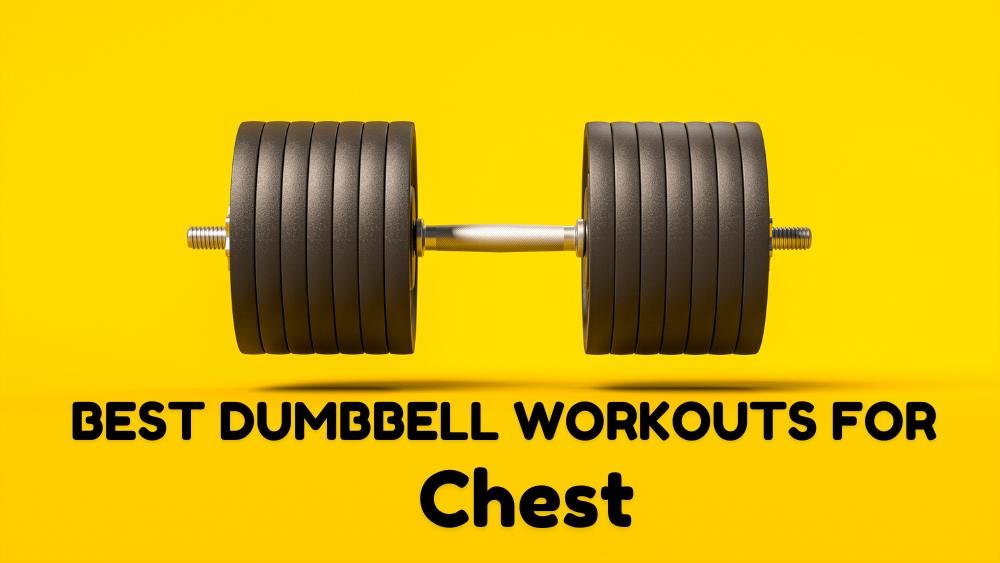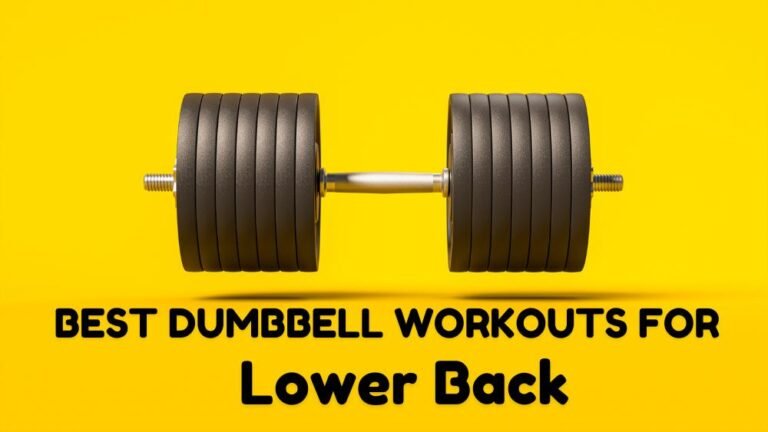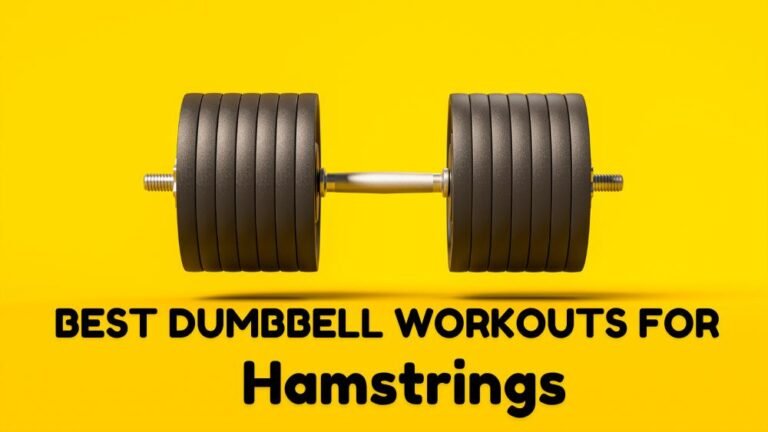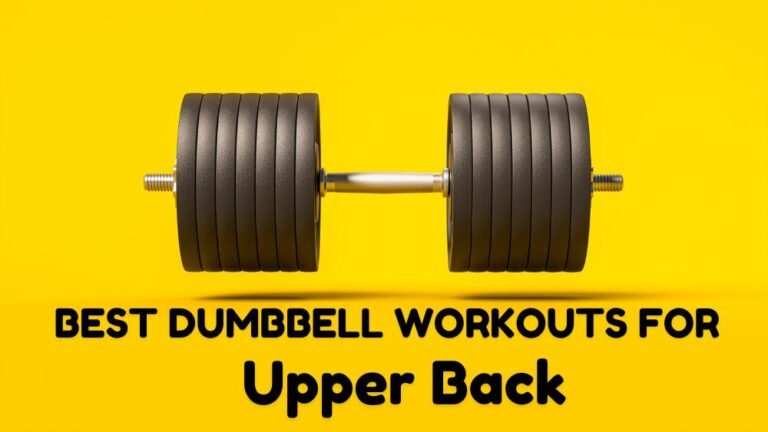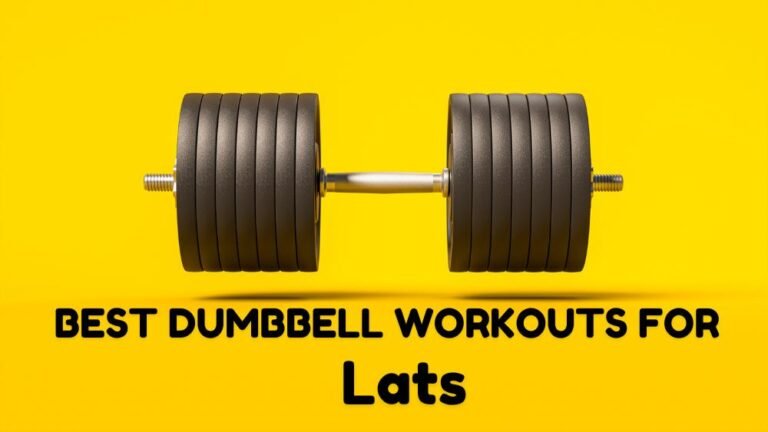9 Best Dumbbell Exercises for Massive Chest
When it comes to building a strong and defined chest, incorporating dumbbell exercises into your workout routine can be incredibly effective.
Dumbbells offer a versatile and accessible way to target the pectoral muscles, allowing for a greater range of motion compared to traditional barbell exercises.
Whether you’re a beginner looking to enhance your fitness journey or an experienced lifter seeking to diversify your training regimen, understanding the benefits and techniques of dumbbell workouts can help you achieve your goals.
In this article, we’ll explore a variety of dumbbell exercises specifically designed to sculpt and strengthen your chest, ensuring you get the most out of your training sessions.
Best Chest exercises with dumbbell
When it comes to building a strong and defined chest, incorporating dumbbell exercises into your routine can be highly effective.
These exercises allow for a greater range of motion, which can lead to improved muscle activation and development. By utilizing dumbbells, you can also promote balance and stability, engaging your core as you perform each movement.
Additionally, the versatility of dumbbells enables you to target different areas of the chest, ensuring a well-rounded workout that can cater to your specific fitness goals.
Whether you’re aiming for hypertrophy, strength, or endurance, incorporating a variety of dumbbell movements will enhance your chest training regimen.
Dumbbell Bench Press
The dumbbell bench press is a highly effective exercise for building strength and muscle mass in the chest. Unlike the barbell bench press, using dumbbells allows for a greater range of motion and engages stabilizing muscles, contributing to overall upper body development.
This exercise not only targets the pectoral muscles but also activates the shoulders and triceps, making it a compound movement that promotes functional strength. Additionally, the unilateral nature of dumbbells can help correct muscle imbalances, guaranteeing that both sides of the body work evenly.
To execute the dumbbell bench press correctly, follow these steps:
- Lie back on a flat bench with a dumbbell in each hand, resting them on your thighs.
- Use your thighs to help lift the dumbbells up as you lie back, positioning them at shoulder level.
- Ensure your feet are flat on the floor, and your back is pressed against the bench.
- With palms facing forward, press the dumbbells up until your arms are fully extended without locking the elbows.
- Slowly lower the weights back to the starting position while maintaining control throughout the movement.
Dumbbell Fly
The Dumbbell Fly is an excellent exercise for targeting the pectoral muscles and enhancing overall chest development. It’s particularly effective for isolating the chest and stretching the muscle fibers, which can lead to greater growth and definition.
By performing this exercise with dumbbells, you can achieve a greater range of motion compared to using a barbell, allowing for more effective muscle activation. This move isn’t only beneficial for muscle hypertrophy but also helps improve your shoulder stability and flexibility.
To execute the Dumbbell Fly correctly, follow these steps:
- Start by lying flat on a bench with a dumbbell in each hand, held above your chest with palms facing each other.
- Keep a slight bend in your elbows throughout the movement to reduce the risk of injury.
- Slowly lower the dumbbells out to the sides in a wide arc, feeling a stretch in your chest as you go.
- Bring the dumbbells back to the starting position by squeezing your chest muscles, ensuring you maintain control of the weights.
Dumbbell Incline Bench Press
The dumbbell incline bench press is a highly effective exercise for targeting the upper portion of the pectoral muscles, as well as engaging the shoulders and triceps.
By performing this exercise on an incline bench, you shift the focus from the mid and lower chest to the upper chest, creating a well-rounded and developed upper body.
This variation of the traditional bench press not only enhances muscle growth but also improves overall strength and stability, making it a staple in many workout regimes.
To execute the dumbbell incline bench press correctly, follow these steps:
- Set an incline bench to about 30-45 degrees.
- Sit on the bench with a dumbbell in each hand, resting them on your thighs.
- Lie back on the bench, bringing the dumbbells to shoulder height with your palms facing forward.
- Keep your feet flat on the ground and your core engaged.
- Press the dumbbells upward until your arms are fully extended, ensuring a slight bend in your elbows at the top.
- Lower the dumbbells back to the starting position while maintaining control and proper form.
Dumbbell Decline Bench Press
The Dumbbell Decline Bench Press is an effective exercise for targeting the lower part of the pectoral muscles, enhancing overall chest development.
By positioning the body at a decline, this variation of the traditional bench press shifts the emphasis to the lower chest while also engaging the triceps and shoulders. Incorporating this exercise into your routine can add variety and help prevent plateaus by challenging your muscles in a new way.
To execute the Dumbbell Decline Bench Press correctly, follow these steps:
- Begin by setting a decline bench at a 15 to 30-degree angle.
- Lie down on the bench with your head lower than your hips, making sure your feet are securely placed on the ground or on the footpads.
- Hold a dumbbell in each hand, resting them on your thighs with a neutral grip.
- As you lift the dumbbells, bring them to shoulder width and rotate your wrists so your palms are facing forward.
- Lower the dumbbells slowly towards your chest, keeping your elbows at a 45-degree angle to your body.
- Press the dumbbells back up to the starting position, fully extending your arms without locking your elbows.
Dumbbell Pullover
The dumbbell pullover is a highly effective exercise for targeting the chest muscles, particularly the pectoralis major, while also engaging the lats and triceps. This compound movement not only helps to build strength and size in the chest but also contributes to improved shoulder stability and flexibility.
By incorporating the dumbbell pullover into your chest workout routine, you can achieve a well-rounded development of the upper body and enhance overall athletic performance.
To execute the dumbbell pullover correctly, follow these steps:
- Lie on a flat bench with your upper back and head supported, keeping your feet flat on the ground.
- Hold a dumbbell with both hands above your chest, arms extended straight, palms facing upward.
- Slowly lower the dumbbell behind your head in a controlled manner, keeping a slight bend in your elbows.
- Go as far as your shoulder mobility allows, ensuring you feel a stretch in your chest and lats.
- Return to the starting position by engaging your chest muscles and pulling the dumbbell back over your chest.
Dumbbell Squeeze Press
The Dumbbell Squeeze Press is an effective exercise for targeting the chest muscles, particularly the pectoralis major. This movement emphasizes the inner portion of the chest while also engaging the triceps and shoulders, making it a thorough upper body workout.
By incorporating the squeeze aspect, this exercise enhances muscle activation and promotes hypertrophy, making it ideal for those looking to build strength and size in their chest.
To execute the Dumbbell Squeeze Press correctly, follow these steps:
- Lie down on a flat bench with a dumbbell in each hand, palms facing each other.
- Press the dumbbells together, squeezing them tightly to engage the chest muscles.
- Start with the dumbbells positioned over your chest, arms extended but not locked.
- Slowly lower the dumbbells towards your chest while maintaining the squeeze, keeping your elbows at a 45-degree angle.
- Press the dumbbells back up to the starting position, ensuring to maintain the tension between them throughout the movement.
Dumbbell Floor Press
The Dumbbell Floor Press is an effective exercise for targeting the chest muscles, particularly the pectoralis major, while also engaging the triceps and shoulders.
This movement is beneficial for those who may experience discomfort during traditional bench pressing or for those looking to enhance their stability and strength in a more controlled environment. By performing the exercise on the floor, the range of motion is limited, which can help in reducing shoulder strain while still providing a robust stimulus to the chest.
To execute the Dumbbell Floor Press effectively, follow these steps:
- Start by lying on your back on the floor, with your knees bent and feet flat on the ground.
- Hold a dumbbell in each hand, positioning them at shoulder level with your palms facing forward.
- Press the dumbbells upward until your arms are fully extended, ensuring that your elbows don’t lock out.
- Slowly lower the dumbbells back to the starting position, keeping your elbows in line with your shoulders and maintaining control throughout the movement.
Dumbbell Close Grip Bench Press
The Dumbbell Close Grip Bench Press is an excellent exercise for targeting the chest muscles, particularly the inner pectorals, while also engaging the triceps and shoulders.
This variation of the traditional bench press allows for a greater range of motion and can help improve overall pressing strength. By using dumbbells, you can achieve a more natural movement pattern, which can lead to better muscle activation and reduced risk of injury.
To execute the Dumbbell Close Grip Bench Press, follow these steps:
- Lie flat on a bench with your feet firmly planted on the ground.
- Hold a dumbbell in each hand, positioning them close together above your chest with palms facing each other.
- Keep your elbows tucked in close to your body as you lower the dumbbells toward your chest, maintaining control throughout the movement.
- Press the dumbbells back up to the starting position, fully extending your arms while keeping the weights close together.
Dumbbell Single-Arm Chest Press
The Dumbbell Single-Arm Chest Press is an excellent exercise for targeting the pectoral muscles while also promoting stability and engagement of the core.
By isolating one arm at a time, this exercise helps to correct muscle imbalances and enhances unilateral strength. It also requires a greater focus on form and balance, making it a challenging yet rewarding addition to any chest workout routine.
Incorporating this exercise can lead to improved overall upper body strength and better performance in other lifts.
To execute the Dumbbell Single-Arm Chest Press correctly, follow these steps:
- Begin by lying on a flat bench with your feet planted firmly on the ground.
- Hold a dumbbell in one hand, extending your arm straight up above your chest, with your palm facing forward.
- Engage your core and maintain a neutral spine as you slowly lower the dumbbell towards your chest, keeping your elbow at a 45-degree angle to your body.
- Press the dumbbell back up to the starting position, fully extending your arm while maintaining control.
Anatomy of the Chest muscle
The chest muscle, primarily composed of the pectoralis major and pectoralis minor, plays an essential role in upper body strength and movement. The pectoralis major is a thick, fan-shaped muscle that covers the upper chest and is responsible for movements such as pushing and lifting.
The pectoralis minor, situated underneath the major, aids in stabilizing the shoulder and facilitating arm movement.
In addition to these primary muscles, the chest area also includes the serratus anterior and the subclavius, which contribute to overall shoulder mechanics and stability.
Engaging these muscles through targeted dumbbell exercises can enhance both strength and definition, leading to improved performance in various physical activities.
Understanding the anatomy of the chest is vital for maximizing workout effectiveness and preventing injury.
Benefits of dumbbell Chest exercises
Dumbbell chest exercises offer a multitude of benefits, primarily by enhancing muscle gain and functional strength. The independent movement of each arm during these exercises demands greater stabilization, engaging more muscle fibers than traditional barbell workouts. This not only leads to improved strength gains but also minimizes the risk of injury, making dumbbells a safer option for chest training.
Additionally, dumbbell exercises for the chest help identify and correct strength imbalances between the left and right sides of the body. This unilateral training promotes balanced muscle development while enhancing coordination, which is essential for effective movement patterns.
Improved coordination aids in stabilizing the shoulder joints and contributes to overall athletic performance, making dumbbell chest exercises a valuable addition to any fitness routine.
Important training variables to consider
When incorporating dumbbell chest exercises into your routine, it’s crucial to contemplate several key training variables to optimize your results. These factors can considerably influence your progress and help you build a massive chest more effectively.
Volume: Adjust the number of sets and reps to match your goals. More volume can lead to hypertrophy, while lower volume with heavier weights may focus on strength.
Intensity: Choose a weight that challenges you without sacrificing form. Aim for 70-85% of your one-rep max for muscle growth.
Frequency: Train your chest multiple times a week, allowing sufficient rest between sessions to promote muscle recovery and growth.
Tempo: Pay attention to the speed of your lifts. Slower eccentric movements can enhance muscle tension, leading to better gains.
Sample Chest workout with dumbbell
When it comes to building chest strength and size, incorporating dumbbell exercises into your workout routine can be incredibly effective. Dumbbells allow for a greater range of motion compared to barbells and help to engage stabilizing muscles. Below is a sample chest workout using dumbbells that targets the major muscles in the chest. This program can be adjusted based on your fitness level and goals.
| Exercise | Sets | Reps |
|---|---|---|
| Dumbbell Bench Press | 3 | 8-12 |
| Incline Dumbbell Press | 3 | 8-12 |
| Dumbbell Flyes | 3 | 10-15 |
| Push-Ups (with dumbbells) | 3 | 8-12 |
| Dumbbell Pullover | 3 | 10-15 |
Make sure to warm up before starting the workout and cool down afterwards to prevent injuries and promote recovery. Adjust the weights as necessary to maintain proper form throughout each exercise.
Questions
How Often Should I Train My Chest With Dumbbells?
You should aim to train your chest with dumbbells about twice a week. This frequency allows for adequate recovery while promoting muscle growth. Listen to your body and adjust based on how you feel.
Can Dumbbell Exercises Replace Bench Press for Chest Growth?
Absolutely, dumbbell exercises can effectively replace the bench press for chest growth. They engage stabilizing muscles and allow for a greater range of motion, helping you achieve impressive gains when performed consistently and with proper form.
What Weight Should I Start With for Dumbbell Chest Exercises?
You should start with a weight that feels manageable, usually around 50% of your body weight for beginners. Focus on form first; once you’re comfortable, gradually increase the weight as you gain strength and confidence.
Are There Any Safety Tips for Dumbbell Chest Workouts?
When performing dumbbell chest workouts, you should always warm up, use a weight you can control, maintain proper form, and have a spotter if lifting heavy. Don’t rush; safety’s more important than lifting heavy.
How Can I Prevent Shoulder Injuries While Training Chest?
To prevent shoulder injuries while training chest, focus on proper form, avoid overloading weights, and incorporate shoulder mobility exercises. Always warm up and listen to your body to reduce strain during workouts.
Conclusion
Incorporating these nine dumbbell exercises into your routine can considerably enhance your chest development.
By targeting different areas of your pectoral muscles, you’ll achieve a well-rounded and massive chest.
Remember to focus on form, adjust weights as needed, and prioritize recovery.
With dedication and consistency, you’ll see impressive results in strength and muscle mass.
So grab those dumbbells and start building the chest you’ve always wanted!

